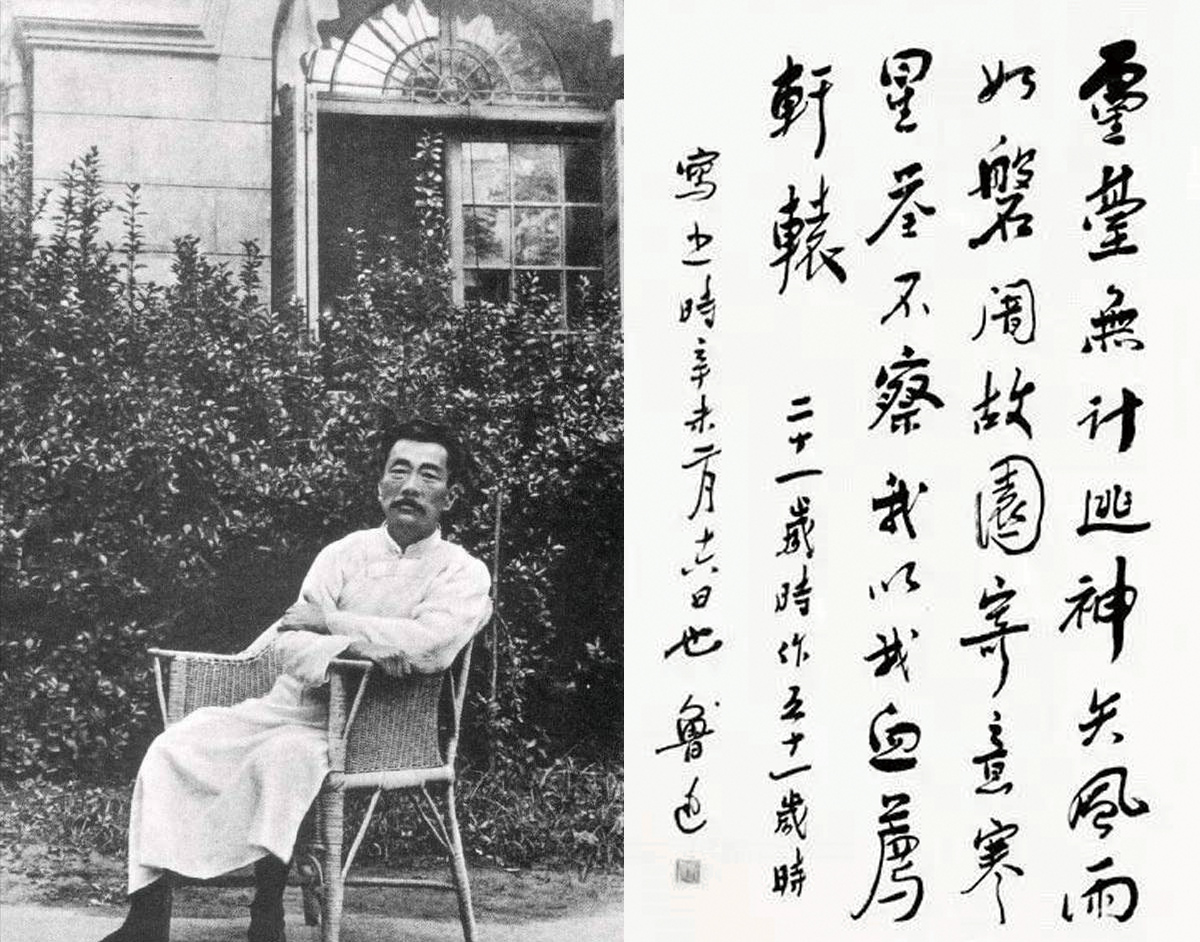Reviving intellectual basis of calligraphy

Pictured is Lu Xun (1881-1936), born Zhou Shuren, and his calligraphy work. As a leading figure of modern Chinese literature, Lu Xun had his own style in calligraphy and some of his calligraphy works are deemed to be even more timeless than those of some well-known calligraphers.
Historians believe that in ancient China, literati were the only people who respected calligraphy and were proficient at it.
Calligraphy by literati began in the Eastern Jin (317-420) and Southern Dynasties (420-589). In the following ten centuries or more, literati occupied the dominant role as calligraphers, laying the foundation for the art form and fostering its aesthetic connotations.
The link between literati and calligraphy has three aspects: literati create calligraphy; their scholarly accomplishments contribute to their artistic attainments; and the aspiration, learning, and spirit of literati together create the mood for calligraphy works. The use of calligraphy by literati enabled the art form to open up more conceptual possibilities and established distinctive aesthetic patterns for the art, which made calligraphy an art in the real sense.
However, in the modern age, it would seem that the spirit of humanism is declining, and so too is the practice of literati calligraphy. One reason for this is a lack of real literati. Intellectuals who live on specialized knowledge and skills, are growing in number, but they are not necessarily literati in the real sense.
For one thing, the term literati, in the strictest sense, refers to those outstanding people with a humanistic spirit, independent personalities and a sense of responsibility. The notion of literati stresses the creativity and thinking capacity of a person who has a background in history, philosophy, art and other branches of the humanities.
The deep reason for the lack of real literati is the commercialization of both creation and business around calligraphy under the market economy. The conditions needed for creating true scholars have been weakened.
The habit of idolizing outstanding calligraphers also contributes to the situation. Throughout history, the inheritance of a calligraphic style came through the personal training of pupils by a master, leading to a flourishing of calligraphy in which different genres existed together. However, as time went on, mainstream genres became dominant, and their representative calligraphers were idolized. For instance, Wang Xizhi was admired by later generations of calligraphers and eventually became the biggest name in this realm. This trend narrowed the scope for calligraphy and set limitations on the creativity of calligraphers.
Still, the paradox of keeping a personal style while developing techniques is also at work here. Improving one’s technique promotes the art form, but it is in conflict with development of personal styles. Changes in personal styles are easy, while improvements to techniques come slowly. When one strives to vary one’s styles, techniques required are inadequate, while repetition and stress on techniques will inevitably shadow personal style. It is hard to reconcile these two opposing requirements.
Whereas some calligraphers in modern times have stressed the learning of traditional techniques, others tend to combine calligraphy with modern Western arts, infusing the art form with performance art, collage art, conceptual art, and other popular art forms in the Western world. In this way, Chinese calligraphy has become more of a writing system in modern fine art, rather than an art of writing in itself.
In recent years, literati calligraphers have been seeking ways to transform the art. In addition to changes in techniques, explorations in conceptual and spiritual aspects are also feasible. Literati calligraphers should adhere to and do research on traditional Chinese culture, to nurture their competence in calligraphy through their cultural achievements. This practice can integrate form and content, endowing calligraphy works with substantial meaning.
Culture is the foundation of calligraphy, while calligraphy is an aesthetic expression of culture. Calligraphy techniques should be fostered over time. It needs to adsorb and integrate various schools and styles both diachronically and synchronically, to form a distinct style of the era.
Literati calligraphy should also foster good aesthetic taste drawing from literature, writing and culture, and it has the function of improving the cultural deposits of the whole nation. As part of the essence of Chinese thought, calligraphy should carry a unique cultural spirit in the 21st century.
Literati are not creating calligraphy works for the sake of writing. They treat it as a venue for expressing aspirations and cultivating taste. Therefore, they pursue the harmony between personality and calligraphy styles. The calligraphy style of a man of letters therefore rests on his or her aspirations, learning, and spirit, and is a distillation of these qualities. There is no shortcut for shaping a personal style. It can only be accomplished by life-long earnest learning.
In this era, we need literati calligraphers to carry on the true essence of Chinese calligraphy. The only way out for retaining the tradition of literati calligraphy is for society to maintain the environment for literati and literati themselves try to gain solid learning based on their natural talents.
